Here you’ll find locals drinking mezcal alongside tourists, colonial plazas that have traditional festivals on most weeks as well as the incredible variety of food and smells from markets such as Mercado 20 de Noviembre.
In this comprehensive Oaxaca travel guide, we’ll explore everything you need to know about Oaxaca City. This includes where to stay, interesting things to know as well as customized itineraries to help you have the most memorable time here.
Plan your trip to Oaxaca
Interesting things to know about Oaxaca
While Mexico is a very diverse country, it’s even more so here in Oaxaca.
The history of this region dates back several thousands of years to the times of the Zapotec and Mixtec cultures, who were thriving here long before other global powerhouses such as the Roman Empire had even existed.
Even despite the Spanish conquest, these indigenous languages and groups still flourish in Oaxaca today, and it’s estimated that over 70% of all territories in this region are still predominantly indigenous.
Oaxaca’s food scene is also famous and regarded by many as the best in all of Mexico.

A lot is also owed to its early roots, given this region was also the birthplace of corn (between 7000-10000 years ago!).
Today we’ll find a range of colorful and tasty dishes, such as the local favorites of Tlayudas, Memelas, and Enmoladas. You can find these in most food stands and markets around the city.
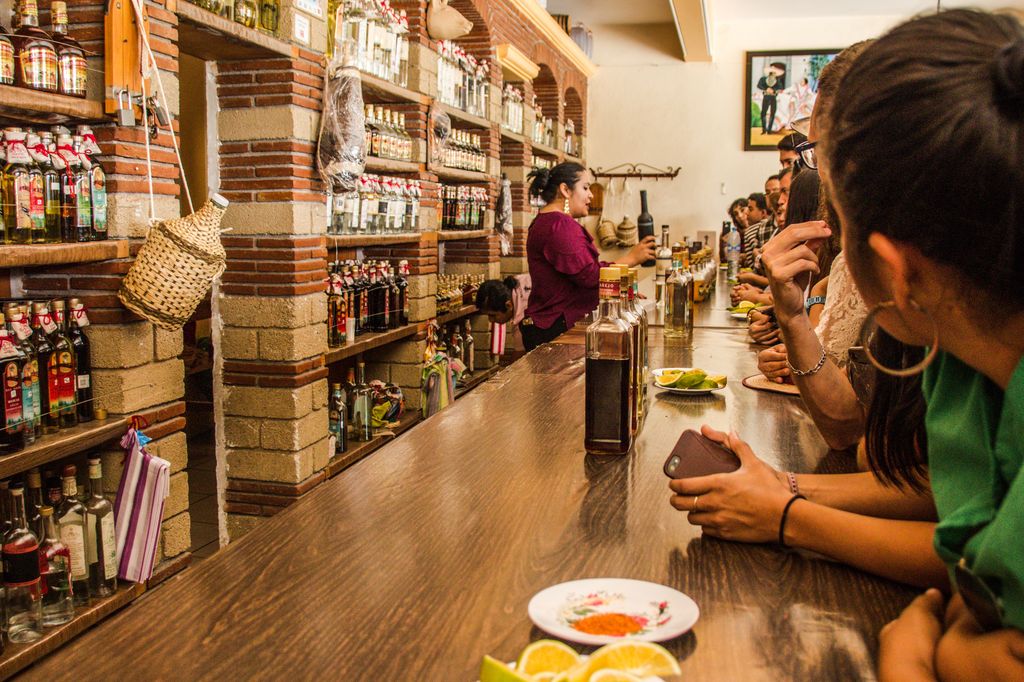
Those after classic tacos or a stiff Mezcal to get things going can head to pretty much any bar or restaurant in the Historic Center.
Despite being one of the more popular Mexican destinations, Oaxaca City still has plenty of authentic charm.
The Zócalo (main square) is home to the iconic Cathedral of Oaxaca and nearby Templo de Santo Domingo de Guzmán, which are two stunning sites worth taking your time to wander around.
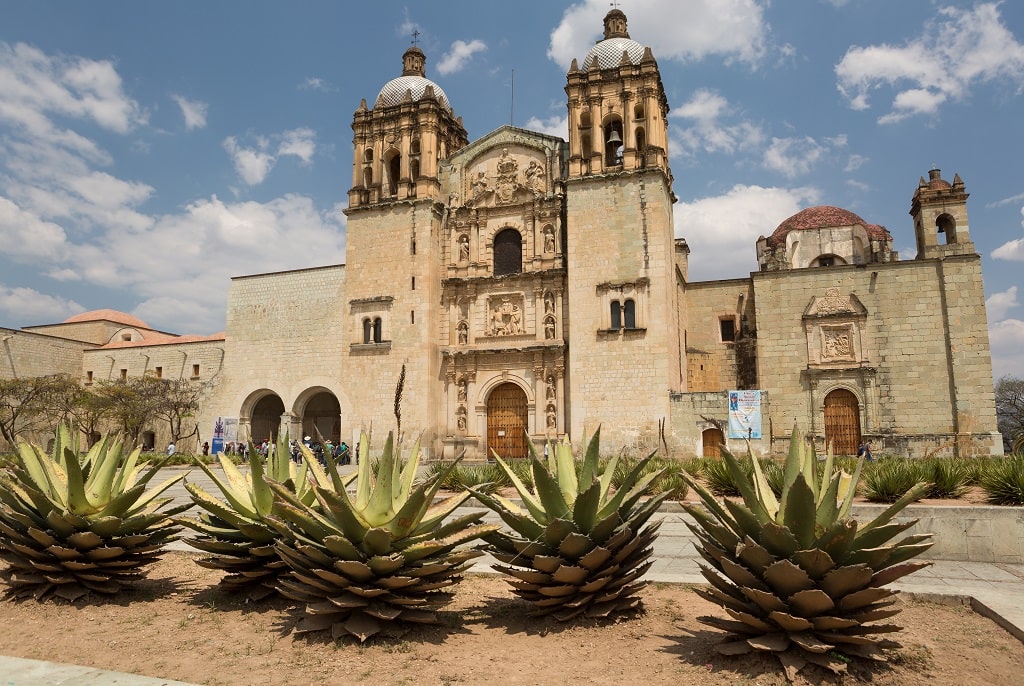
It’s also easy to reach the ruins of Monte Albán, which is a pre-Hispanic site that sits on top of a mountain and dominates the surrounding plains and Oaxacan highlands.
Where to stay in Oaxaca
Whilst Oaxaca City is among the safer cities that you can visit in Mexico, the Historic Centre remains the best place for travelers to stay in.
It’s by far the safest area of the city, where crime levels are low (do keep an eye out for pickpocketers though, especially when in the markets).
This area also has the largest range of accommodation options, along with many things to see and do nearby.
If you’re looking to keep things cheap, then I highly recommend staying at the Hotel El Nito Posada. Here you’ll be staying in a stylish private room just a block away from the main Zócalo, with the charming location (on a cobblestone street) making for a really memorable stay.
Those who are looking for more deluxe accommodation will want to stay at the Hotel Marques Del Valle. Located right in the heart of the Zócalo, you’ll be staying in a luxurious hotel room with a terrace view of the square. You’ll also have an on-site restaurant and bar to enjoy during your stay.
Oaxaca Itineraries
Once you’ve decided on visiting Oaxaca City, it’s time to start planning how you’ll use your time here.
Below I’ve created various customized itineraries depending on your timeframe. Feel free to use these and mix them up according to your own needs and travel style.
For further inspiration, you can also check out our top 10 things to do in Oaxaca City.
1 Day in Oaxaca
Spending just one day in Oaxaca City is not ideal, however, it’s still definitely possible to see all of the city highlights if you’re motivated and organized.
You’ll first want to spend the morning heading to the Zócalo in the Historic Center. This main plaza is known for its charming fountains, green spaces, and old colonial buildings.
Here we’ll also find the imposing Metropolitan Cathedral of Oaxaca, which is well-known for its giant twin towers and baroque facade.
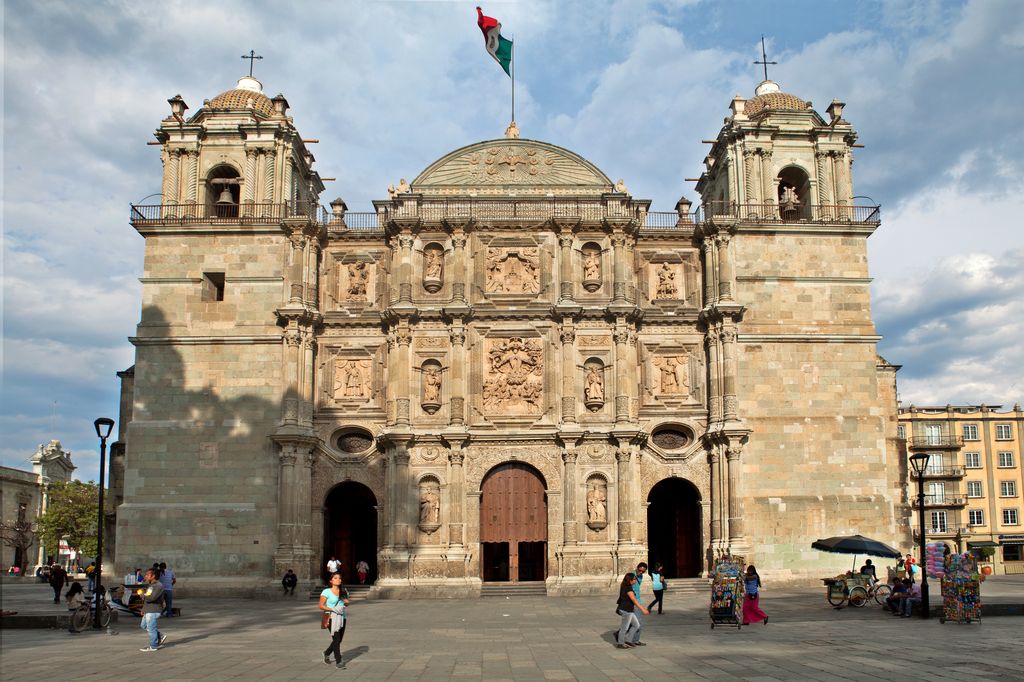
You can easily grab lunch at one of the restaurants that surround the plaza, or from the food stands nearby that serve up some tasty local dishes (I recommend grabbing a cool Nieve afterward, which is like a creamy, iced popsicle often served with fresh fruits).
Afterward, you’ll want to walk along the Andador Turístico (the actual street name is Calle Macedonio Alcalá), which is home to many craft markets, street art, and colorful settings that are perfect for a photo.
It’s also a really good place to pick up a traditional Oaxacan souvenir, such as handmade ceramics or a bottle of Mezcal.
We’ll then finish up the historical tour by heading to the Templo de Santo Domingo de Guzmán.
Built in 1724, this gold-laden cathedral is one of the most striking in the entire country. Here you can see many incredible murals, as well as stroll around the picturesque courtyard before heading back to take your bus or flight out of Oaxaca.
3 Days in Oaxaca
Three days is much more ideal and tends to be enough to see all of the city highlights (as well as a trip or two into the surrounding regions).
I recommend spending your first day exactly as outlined above, and at night heading to a Mezcal bar such as La Mezcalerita to really get into the Oaxacan style of things.
Waking up (somewhat) early on our second day, you can then head on a half-day tour to the Monte Albán Ruins, which are just an hour away.
Built in 500 BC, this site was the most important of the Zapotec civilization, and the second overall in all of Mexico (after Teotihuacán).
Whilst you can visit independently, the tour is a better option since you’ll have all logistics sorted as well as having a knowledgeable local guide on hand to teach you everything you need to know.
During your extended time in Oaxaca, you can also slow down a bit to take in the more relaxed pace of this city, as well as visit nearby towns.
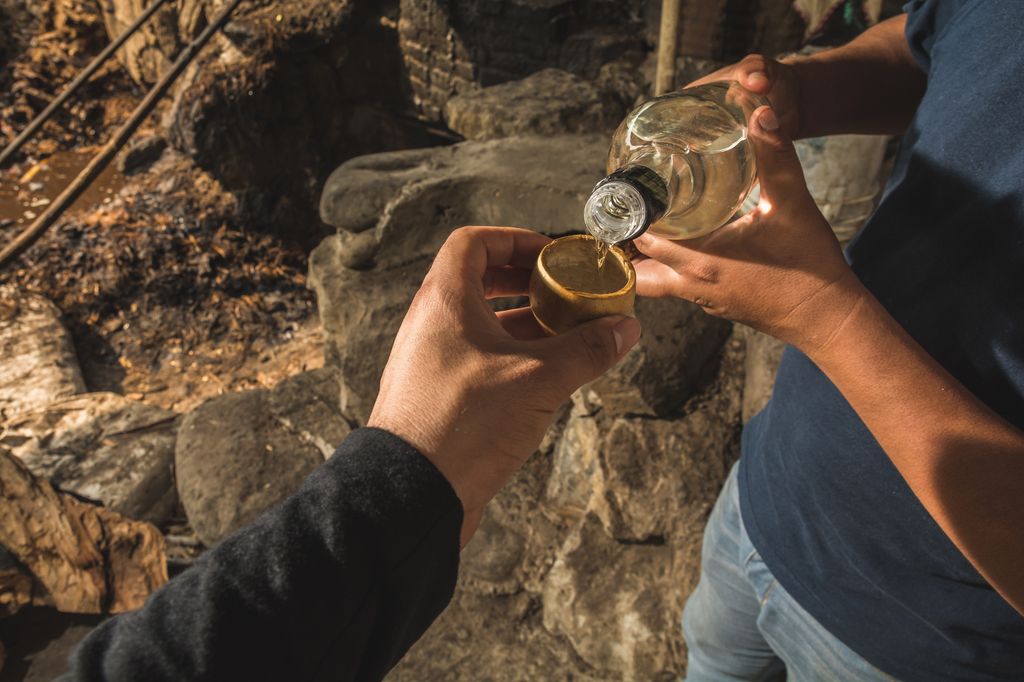
San Pablo Villa de Mitla is one of the very best day trips, where you can buy traditional loom textiles as well as get boozy in a traditional Mezcal factory.
6 Days in Oaxaca
Although I personally spent three days in Oaxaca, I’d recommend travelers heading here to aim more towards six.
The first benefit is that you can enjoy yourself more, not having to rush between things and constantly be on a hectic schedule.
You can spend more time wandering around the streets, speaking to locals, and enjoying activities such as walking tours and market visits.
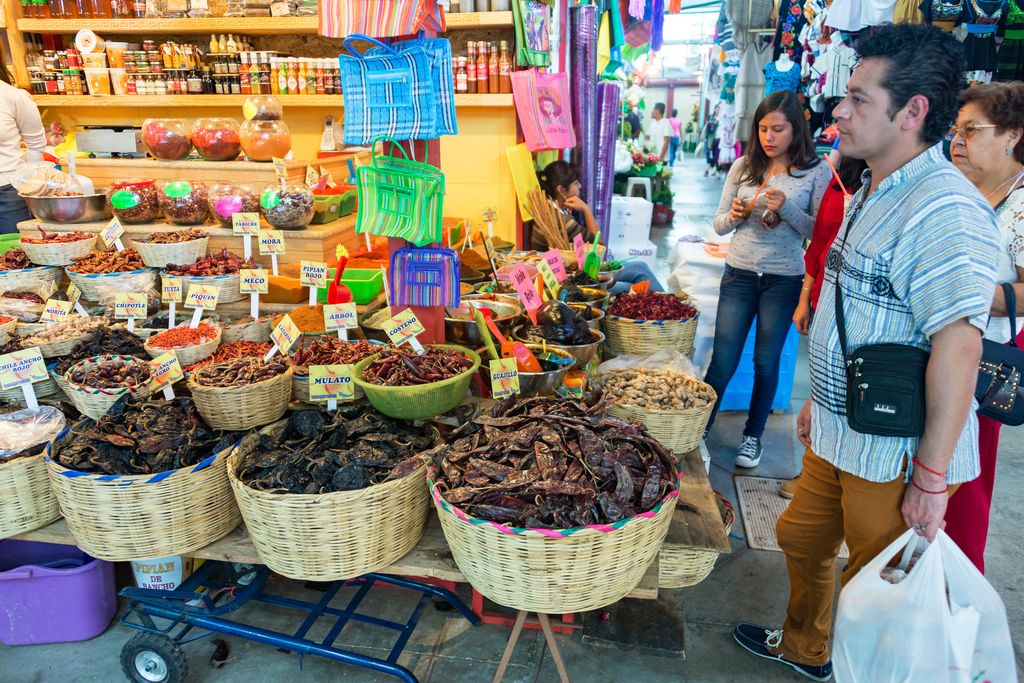
With this extra time, you’ll also have the opportunity to visit more of the Oaxaca region, which I think is absolutely worth it.
The most famous site is Hierve el Agua, which is a petrified waterfall formed from its heavy composite of carbonated water and rich minerals.
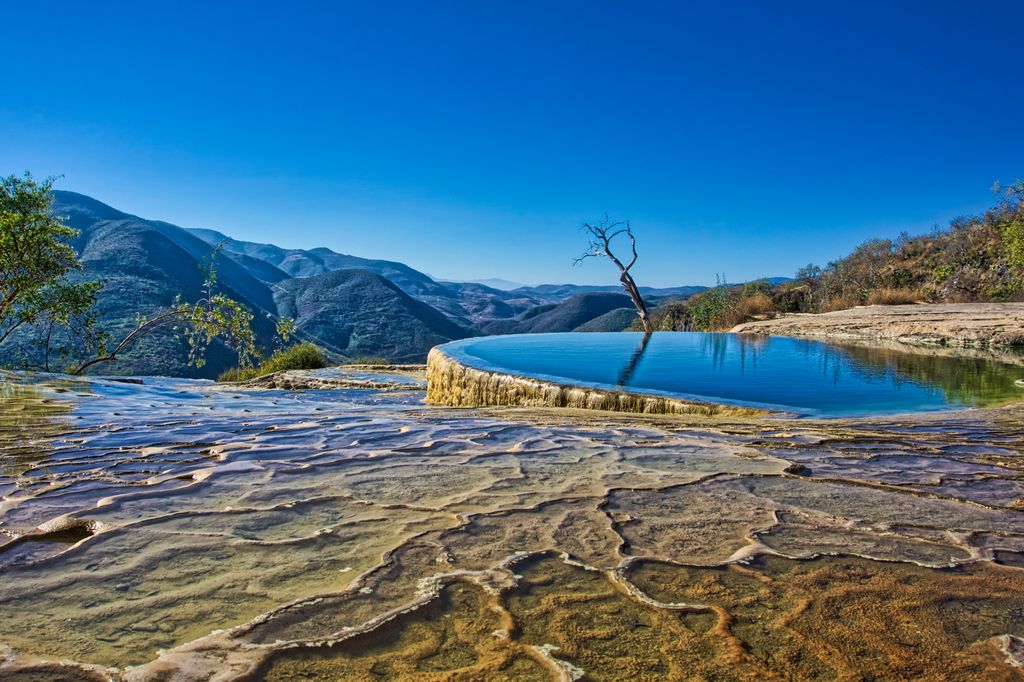
If you love off-the-beaten-path towns and lesser touristy sites, then you’ll also want to head to Capulálpam de Méndez.
Located roughly 70 km from Oaxaca, here you can enjoy the traditional town with its beautiful stone cathedral and colorful houses. You can also climb up to the Mirador de la Cruz, where you’ll have breathtaking views over the mountain-nestled town.
How to get to Oaxaca
Arriving Internationally
If you’re arriving in Oaxaca as your first stop in Mexico, then you have a few options.
The local airport does welcome some international flights directly, such as from the USA (Dallas and Los Angeles), with a one-way ticket costing between $250-350.
Guatemala is the other, which is best for travelers who are in Central America (roughly $150 for a one-way).
The other option is by bus, which can be reached from Guatemala further south.
If you’re considering this option, then you’ll first need to cross the border from Malacatán to Tapachula, and then travel by bus to Oaxaca City which takes roughly 14 hours (it’s best to go with OCC who charge roughly $50-60).
If you do choose to come from further south, then I highly recommend stopping and spending some time in the Chiapas region given you’ll be close to some incredible places such as San Cristóbal de las Casas and the Sumidero Canyon.
Arriving Domestically
Oaxaca is located along one of the most common travel routes through Mexico (from Mexico City to Cancún), so there’s a good chance you’ll already be in the country before arriving.
Buses are the most popular way of getting here, given they are cheap and also as bus quality tends to be of surprisingly high quality in Mexico.
Mexico City to Oaxaca is a popular route, which takes 7 hours and costs between $40-45.
The other is when heading in reverse from San Cristóbal de las Casas to Oaxaca. The route can take anywhere from 12-15 hours (always go for the night bus on this leg) and costs roughly $50.
You can also fly directly into Oaxaca City from various airports all over the country.
The most popular airports to fly from include Mexico City, Cancún, Monterrey, and Guadalajara. A one-way will cost you between $35-55 (without baggage).
When to Visit Oaxaca
Although Oaxaca is a popular destination to visit, the weather can really vary throughout the year so it’s best to plan in advance according to the experience that you want.
The dry season begins in November and ends in April, and is the overall most popular time to explore Oaxaca.
Daily average temperatures are warm, ranging between 63-72°F. Highs can reach up to 87°F (April is the hottest month of the year), although lows drop quickly heading into the night (between 48-58°F).
Rainfall is extremely low during the dry season, with just 0.2-1 inches falling throughout each month.
This makes it the best time to visit for clear skies and little rain and to explore the Oaxacan region with very few interruptions.
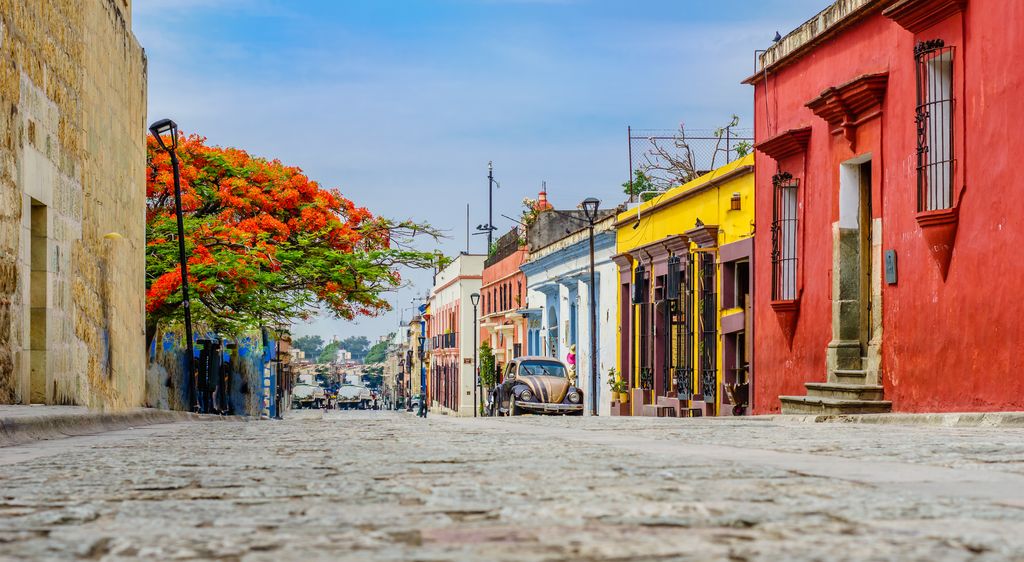
The wet season starts around early May and continues through until October.
Daily average temperatures range from 67-72°F, with mid-afternoon highs of 85°F and evening lows of 51°F (December is the coldest month of the year to visit).
As you can imagine, rainfall is heavy and can vary between 3-6.5 inches each month.
Although the showers can interrupt outdoor exploring, the wet season is great for getting travel deals on flights and accommodation since it’s a less touristy time to visit (especially in September and October).
Oaxaca Travel Tips
Is it safe to explore Oaxaca?
While other Mexican cities can be hit or miss when it comes to crime, Oaxaca City on the other hand is mostly safe to walk around, even if you’re travelling alone.
You can visit attractions independently without having to be overly anxious, although tours are still a good idea (given you’ll learn much more with a guide).
Your biggest concern will be when exploring inside the markets, as petty theft has been reported. Always keep your phone and wallet in your front pockets, and leave all flashy accessories and valuables back in your accommodation.
Whilst Oaxaca is one of the safest states in Mexico, there’s still a risk of petty theft occurring. This is most likely at night or within the busy markets, where you’re less aware of everything happening around you.
If you’re planning on a heavy night of Mezcal, just make sure to write down where you’re staying so you can get back in one piece!
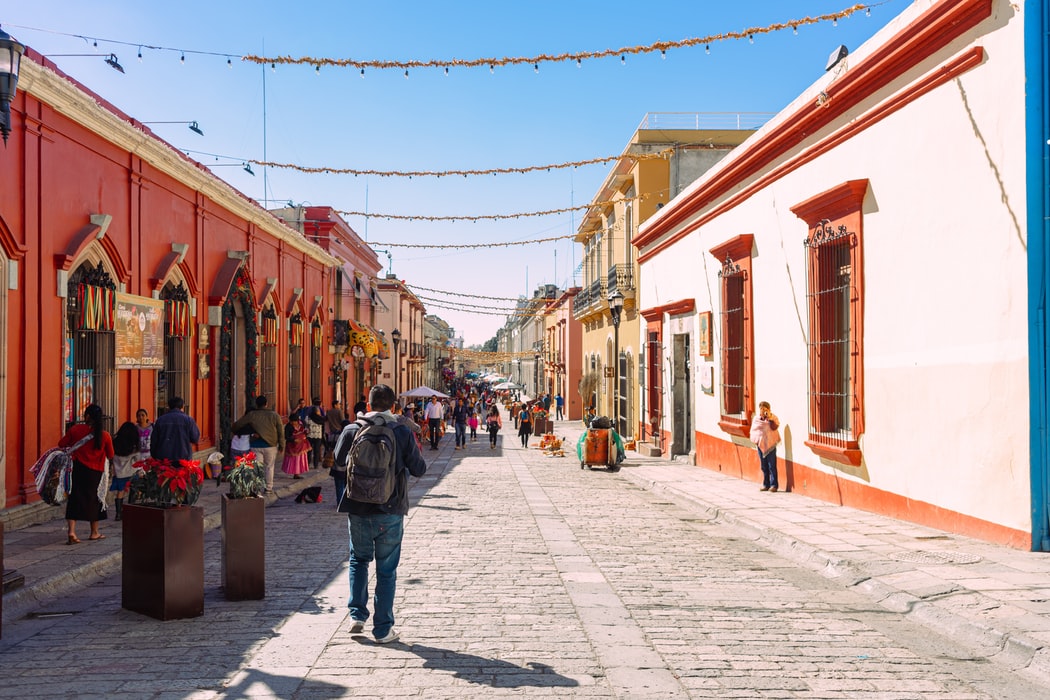
Climate and what to pack
One of the most important things to remember when heading to Oaxaca City is to bring a wide range of clothes.
Given Mexico is usually perceived to be hot everywhere, many travelers are often caught out shivering when the sun goes down in these highland areas.
Usually, a jumper is enough, although you may want to bring a light coat if heading in winter (or a poncho if visiting in the wet summer months).
During the day you’ll want to wear shorts, light garments and lather up with sunscreen, and especially when heading into the mountains to destinations like Monte Albán and Hierve el Agua.
When to visit
Something else I highly recommend travelers do is to plan their trip to Oaxaca City around the major holidays.
Whilst prices will be a little more expensive, you’ll get to see some truly memorable cultural events.
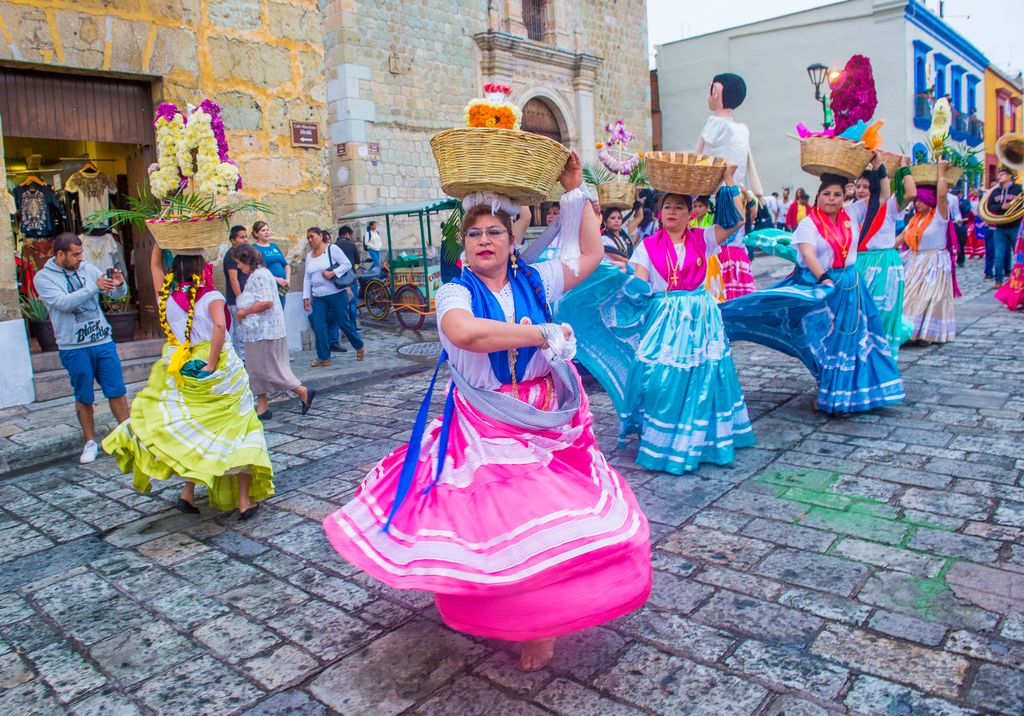
Día de los Muertos (early November) is one of these, where the rowdy parades, colorful arrangements, and offerings for past loved ones will be really eye-opening.
Other great events to witness include Semana Santa (late March-early April) and the Guelaguetza (late July).
Some links may be affiliate links, meaning I may earn commission from products or services I recommend. For more, see site policies.







0 comments
Leave a comment
Your email address will not be published. Comments are manually moderated.